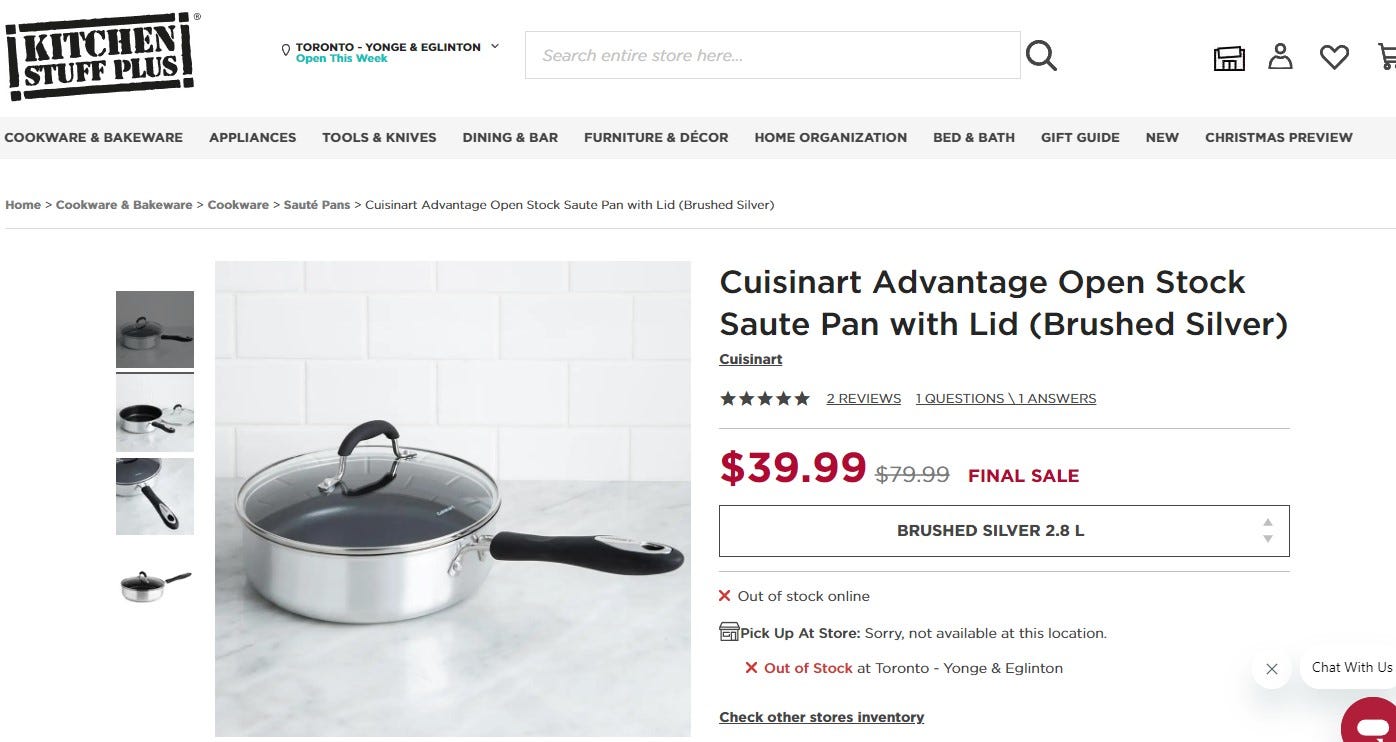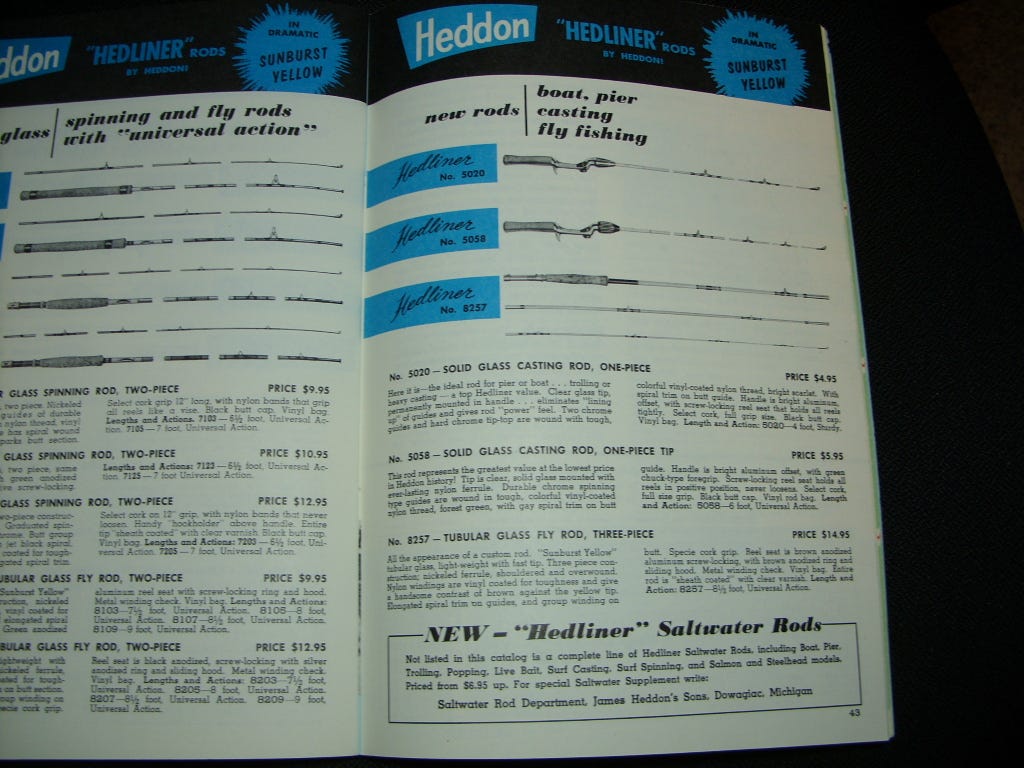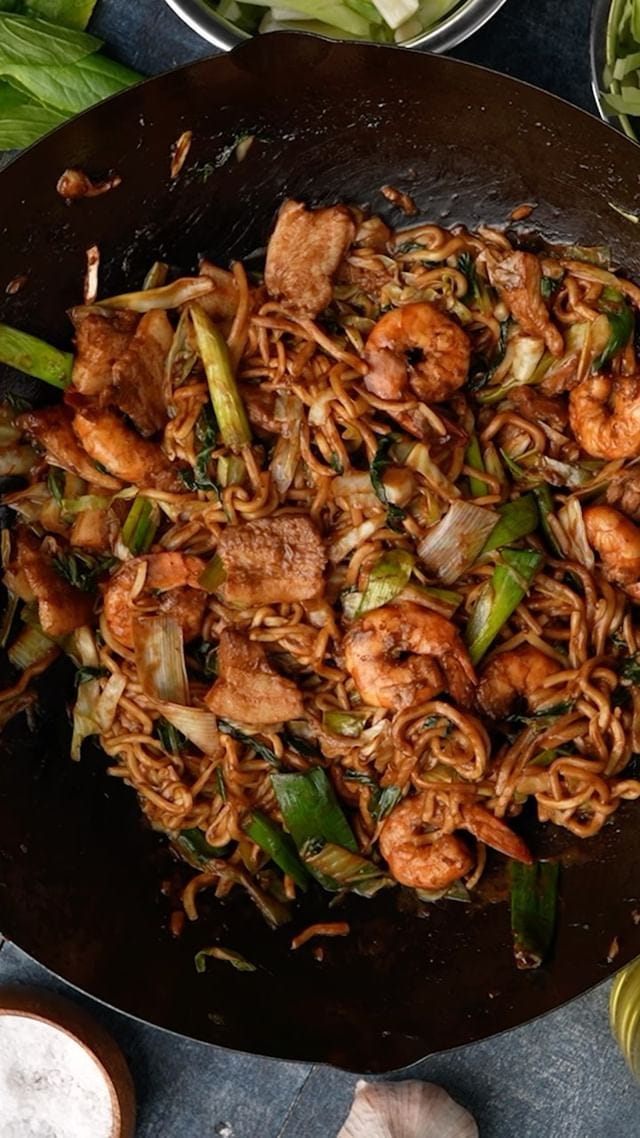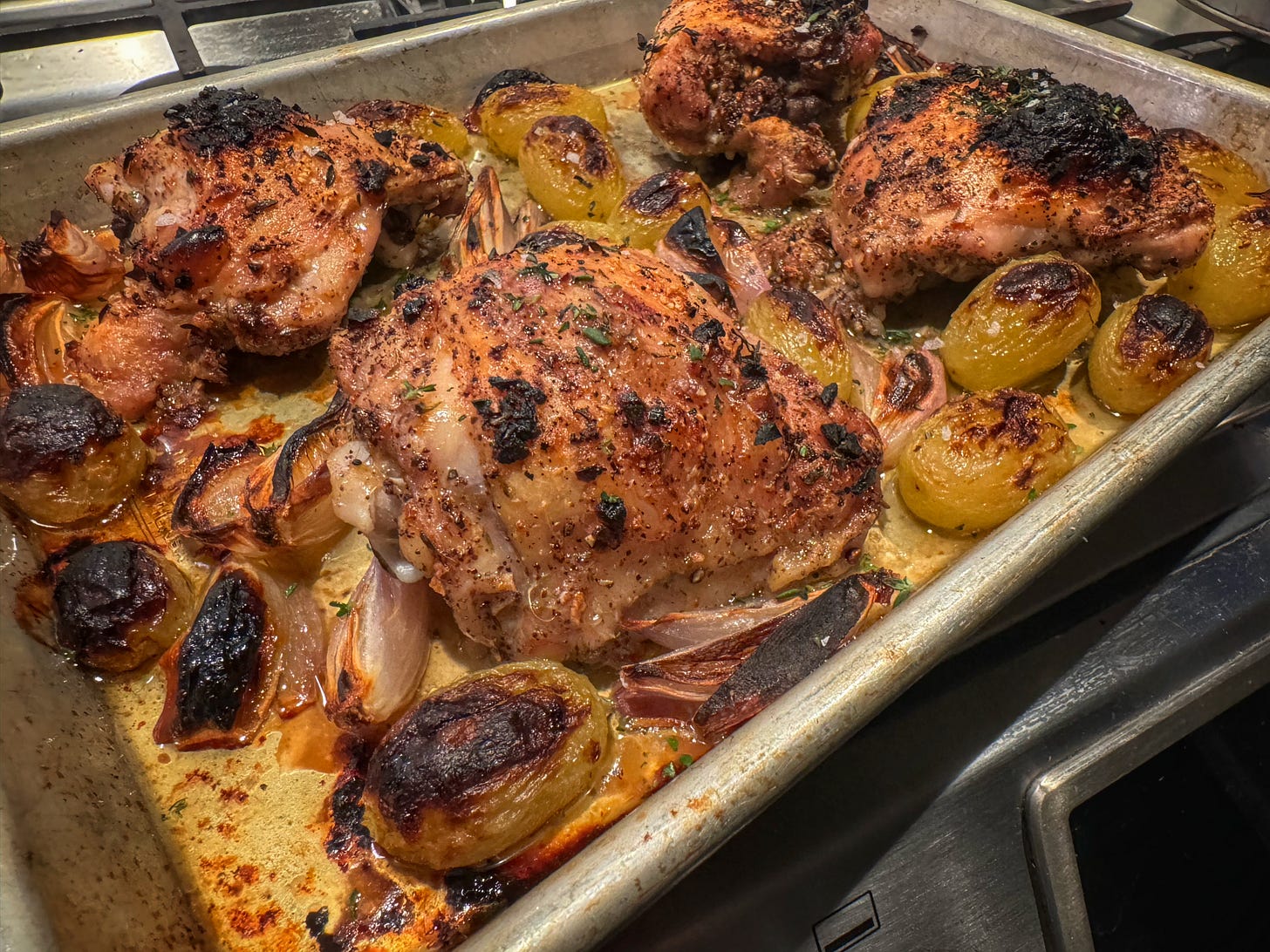38. Two Pans, Zero Raves
They want you to buy it hook, line, and sinker.
(Before we get into this issue, I wanted to note that The Plate Cleaner has just turned three-years-old. Thanks to all of my subscribers, old and new. I still can’t believe anyone has shown up to read this and then decided to stick around. Thanks also to everyone who has liked or commented. Pressing “Publish” often feels like launching everything I’ve written into an abyss, never to be heard from again. It’s nice to know it’s actually hitting someone on the way down. Thanks to those who have shared it with non-subscribers. The most effective way to grow an audience is by word-of-mouth and I appreciate your help. And finally thanks to everyone who has made a suggestion or asked a question that has led to me writing about it. Coming up with things to write about can be tough (even/especially when there are months in between) and a little outside nudge is always welcome.)
On that note, today I’m returning to what I had hoped would become a more regular feature of this newsletter—Panhunter. The idea was that I would use my semi-obsessive, ever-optimizing research skills to help readers find just the right kitchen equipment for their needs.
Part of the inspiration for Panhunter came after someone I was working with found out that I knew a lot about food and kitchen stuff, and then began asking me questions fairly regularly. Maybe, I thought, this could be something to write about regularly, and from that, the Panhunter ball started rolling.
One of the questions they asked me was, “Should I get an Always Pan?” For those who don’t know, the Always Pan, sold by Our Place, was the “it” pan on Instagram around two years ago. It promised to replace ten other pans because it’s the pan that “sautés, fries, roasts, boils, bakes, braises, sears, strains, serves, and stores …[it] does it all!”
Not ever having seen or used one, the only answer I could give immediately was “not all at once.” If you’re using it to fry, you can’t also be using it to steam, so it’s not like you can just get rid of all your other pans. Digging (barely) a little deeper, I learned that many reviewers found it underwhelming, especially the build quality, for a pan of its price.
And what a price. The Our Place website lists the price at $220 (although it seems permanently marked down to $125). Not cheap for what one review called “fairly standard nonstick cookware” that reportedly has problems with the finish chipping and the nonstick coating peeling.
Months later I read a comment online that products advertised on Instagram are today’s versions of “As Seen on TV” products like The Pocket Fisherman.
At first, that seemed like a bit of a stretch. Looking back now, the ad for the Pocket Fisherman is certainly less polished and more schlocky.1 But if you watch the ad for the Always Pan again and look past its tweeness, you’ll recognize a similarity in the patter and the way features are called out as unique (or at least distinctive) to the product.
What’s also similar, although I didn’t realize it until running the numbers, is just how bad both deals are. I had assumed the Pocket Fisherman, looking (now?) like cheap junk, was priced cheaply as well. But $19.95 in 1972 is the equivalent of $146.90 in 2023!
A decent fishing rod in 1972 (granted, without a Johnson reel or Trilene monofilament included) cost between $5 and $10, the 2023 equivalent of $37-$74. That’s not too far off the Always Pan’s deal of $125 when you can probably find one with the same functionality and build quality for around $40 instead.

I recently became aware of a product that does an even better job than the Always Pan, or the Pocket Fisherman, of trying to make consumers think that all the things it says make it special are, in fact, special. It’s called the Mako Black Steel Wok and for a while I was repeatedly getting served Instagram ads for it like the one below. (Click the image to play.)
Like the Always Pan, I have never seen, held, touched, or cooked with a Mako Black Steel Wok, but I also know that I don’t need to in order to tell you that you definitely shouldn’t buy one. Even just from the copy describing it, I had my doubts.
“The perfect wok didn’t exist, so Mako made it.” As a rule of thumb, any time someone claims to have finally perfected a tool2 that has been used successfully by millions of people for thousands of years, treat it with a grain of salt. First, it’s almost certainly not true, and second, it smacks of “those silly people didn’t know what they had until geniuses like us came along,” which is a pretty bad look.
The second line of the ad’s post copy had me intrigued: “It’s everything all the other woks aren’t.” Was it square? Made of leather? Perforated? Hand forged by Former White House Chief of Staff John Sununu?3
I needed to know exactly how it was everything all the other woks aren’t (EAtOWA), so I looked at what exactly they were claiming. This is the gist of it, taken from the Mako website:
“Black carbon steel”.
“Designed to heat and cool quickly for ultimate control when frying, searing and sauteing.”
“The MAKO Black Steel 14 Wok will develop a natural non-stick patina layer over time. It was designed to do this. The patina will continue to improve the performance and ability to impart that distinctive wok flavour.”
“Suitable for all cooktops (including induction).”
These are all true of any $40 carbon steel wok, as can be seen here in the Serious Eats guide to buying a wok. Absolutely nothing here is EAtOWA.
Pouring spout and helper handle
Again, hardly EAtOWA. Almost every wok has a helper handle and pouring spouts are not unusual, although not standard.
“Pre-Seasoned The Mako Black Steel 14 wok will perform as it should - immediately.”
OK, most woks come unseasoned. That is, without a layer of polymerized fat that gives them their nonstick coatings.4 But a seasoned wok will only set you back around $110 instead of the $40 for an unseasoned one.5
There was just one claim6 that truly was EAtOWA: the 12-month warranty. For all my searching, I couldn’t find another one. Most woks don’t come with warranties, although I found a Cuisinart wok that has a lifetime warranty. But none with 12 months, so one point to Mako.
In the end, the way the Mako stood out from other woks was that, like the Pocket Fisherman and the Always Pan, it is incredibly expensive for what you get. In Canada, an unseasoned 14” carbon steel wok will probably set you back about $60 at the most, though you can probably do better at shops in your local Chinatown. A pre-seasoned wok might go for around $110.
So what about the Mako?
More than double the price of even your most expensive option!7 Granted, you do get a few accessories with the Mako that might set you back another thirty or forty dollars, but that still means you’re overpaying by around $100 and waiting around a month (as of this writing) for delivery. Instead you could have one that is just as good on your stovetop tonight, getting a one-month head start on that patina!
You couldn’t trust Ron Popiel in 1972 and you can’t trust Mako Kitchenware in 2023. So who can you trust? There’s really only one option when you’re faced with making a tough kitchenware decision: Panhunter. I await your assignments.
What I’m consuming…
I’ll be perfectly honest. Between watching the baseball playoffs and continuing my pursuit of amazing cookbooks at incredibly affordable prices, I haven’t been much of a food media consumer lately. I’ve been making my way through Ann Patchett’s most recent book of essays, These Precious Days, which does have one piece about cooking Thanksgiving dinner, however. Her writing is such a delight and I am especially looking forward8 to the follow-up to the remarkable title essay, which was originally published in 2021 in Harper’s.
What’s on the menu…
Unlike one of my previous attempts to make a chicken recipe from Colu Henry, this time I got her Sheet Pan Chicken with Shallots and Grapes just about right. OK, maybe I left it under the broiler for about 45 seconds too long, but the results were nevertheless fantastic. I used green grapes and once roasted and caramelized they reminded me of apple pie (in a good way).
It’s a terrific weekday meal because if you put on a pot of rice and then start the recipe it will all be ready around the same time. I even had enough time once the chicken was in the oven to clean up all of my prep aside from the sheet pan and the rice cooker. And as a gift to future Mike, when I was a packing up the leftovers, I poured all of the golden juices left on the sheet pan onto the rice. Lunch the next day was just a little more special.
In 1972 it probably looked like a goddamn Super Bowl ad.
Or a dish, for that matter. YouTubers who claim to have “solved” how to make something like bagels have probably just figured out a way to make them wrong (and worse).
The second reference I’ve made to John Sununu in my writing career. First person to identify the other one wins a cookbook from my next trip to Value Village. (See, it pays to read the footnotes.)
As you cook more (and treat your pan properly) that coating develops further, and, referring back to the Mako website, “will continue to improve the performance and ability to impart that distinctive wok flavour.”
$70 difference for the seasoning? I’ve got to start me a seasoning business, pronto. (Actually not. Seasoning takes three or four hours of running your oven at 400 for hours at a time. Your profits are out the range hood in no time.)
OK, it also made an EAtOWA claim of “14 inches,” which is EPMEODWI (Everything Pretty Much Every Other Decent Wok Is).
I am not including woks from premium cookware lines like All-Clad that cost hundreds more because you absolutely don’t need them.
If you’re familiar with title essay, you’ll know that “looking forward to” is not exactly the correct sentiment, but you’ll also know what I mean.








